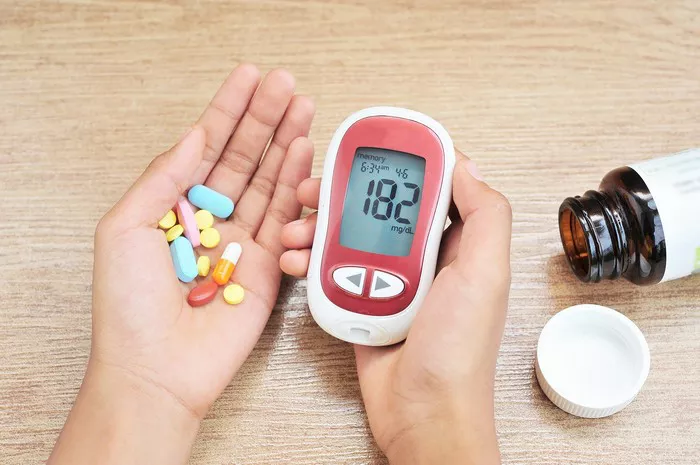Diabetes is a complex metabolic disorder affecting millions worldwide, with significant implications for long-term health and well-being. Among the various facets of diabetes management, understanding insulin resistance plays a pivotal role. In this comprehensive guide, we delve into the intricacies of insulin resistance, its diagnostic methods, and the crucial steps towards effective management.
What Is Insulin Resistance?
Insulin resistance refers to a condition where in the body’s cells become less responsive to the effects of insulin, a hormone essential for regulating blood sugar levels. This diminished sensitivity leads to impaired glucose uptake by cells, resulting in elevated blood sugar levels. Over time, persistent insulin resistance can progress to prediabetes and ultimately, type 2 diabetes. Additionally, insulin resistance is intricately linked to other metabolic disorders, including obesity, hypertension, and dyslipidemia.
Testing for insulin resistance holds paramount importance in managing metabolic health and mitigating the risk of associated complications. By identifying insulin resistance early on, healthcare providers can intervene promptly, implementing targeted interventions to improve insulin sensitivity and prevent progression to more severe forms of diabetes. Moreover, detecting insulin resistance allows for personalized treatment strategies, optimizing outcomes and enhancing quality of life.
Types of Blood Tests for Detecting Insulin Resistance
Several blood tests are utilized in diagnosing insulin resistance, each offering unique insights into metabolic function:
Fasting Insulin Levels: Measuring insulin levels after an overnight fast provides valuable information about baseline insulin secretion and sensitivity.
Fasting Blood Glucose Levels: Evaluating fasting blood glucose levels aids in assessing overall glycemic control and identifying potential abnormalities.
Hemoglobin A1C (HbA1C): HbA1C reflects average blood sugar levels over the past two to three months, serving as a reliable indicator of long-term glucose regulation.
Oral Glucose Tolerance Test (OGTT): This test involves consuming a standardized glucose solution followed by blood sugar measurements at specific intervals, offering insights into glucose metabolism and insulin responsiveness.
Interpreting Blood Test Results for Insulin Resistance
Understanding the implications of blood test results is crucial for accurate diagnosis and appropriate management:
Normal: Blood test results falling within established reference ranges indicate optimal metabolic function and insulin sensitivity.
Borderline: Values slightly above normal may suggest early signs of insulin resistance, warranting close monitoring and lifestyle modifications.
Indicative of Insulin Resistance: Elevated fasting insulin levels, fasting blood glucose levels, or abnormal HbA1c and OGTT results indicate significant insulin resistance, necessitating proactive intervention and management strategies.
Factors Influencing Test Results
Various factors can influence blood test results for insulin resistance, including:
Medications: Certain medications, such as corticosteroids and antipsychotics, may interfere with insulin sensitivity and glucose metabolism.
Diet: Dietary habits, particularly excessive consumption of refined carbohydrates and sugars, can exacerbate insulin resistance and impair glycemic control.
Physical Activity Level: Regular physical activity enhances insulin sensitivity and glucose uptake by skeletal muscles, mitigating insulin resistance.
Underlying Health Conditions: Coexisting medical conditions, such as polycystic ovary syndrome (PCOS) and non-alcoholic fatty liver disease (NAFLD), are often associated with insulin resistance and may impact test results.
Follow-Up and Further Testing
Upon receiving a diagnosis or indication of insulin resistance, individuals should undergo further testing and evaluation to determine the underlying cause and assess overall metabolic health. Healthcare providers may recommend additional diagnostic tests, such as lipid profiles, liver function tests, and assessments of cardiovascular risk factors. Additionally, lifestyle modifications, including dietary changes, regular exercise, and weight management, are integral components of insulin resistance management.
Proper preparation for blood tests is essential to ensure accurate results and facilitate optimal diagnosis and management of insulin resistance. Patients should adhere to fasting requirements, abstaining from food and beverages (except water) for the specified duration prior to testing. Moreover, individuals should inform their healthcare providers about any medications, supplements, or underlying health conditions that may influence test results.
While understanding blood test results is valuable, seeking professional guidance from a healthcare provider is paramount for personalized advice and interpretation. Healthcare professionals possess the expertise to formulate tailored management plans based on individual needs, optimizing outcomes and promoting long-term metabolic health. Patients are encouraged to initiate open and proactive discussions with their healthcare providers, actively participating in their diabetes management journey.
Conclusion
Understanding insulin resistance is pivotal in the comprehensive management of diabetes and metabolic health. By recognizing the importance of testing, interpreting blood test results accurately, and embracing proactive lifestyle modifications, individuals can take proactive steps towards optimizing metabolic function and reducing the risk of associated complications. Through collaborative efforts between patients and healthcare providers, the journey towards effective insulin resistance management becomes a shared endeavor, ultimately enhancing overall well-being and quality of life.
Related Topics:


























